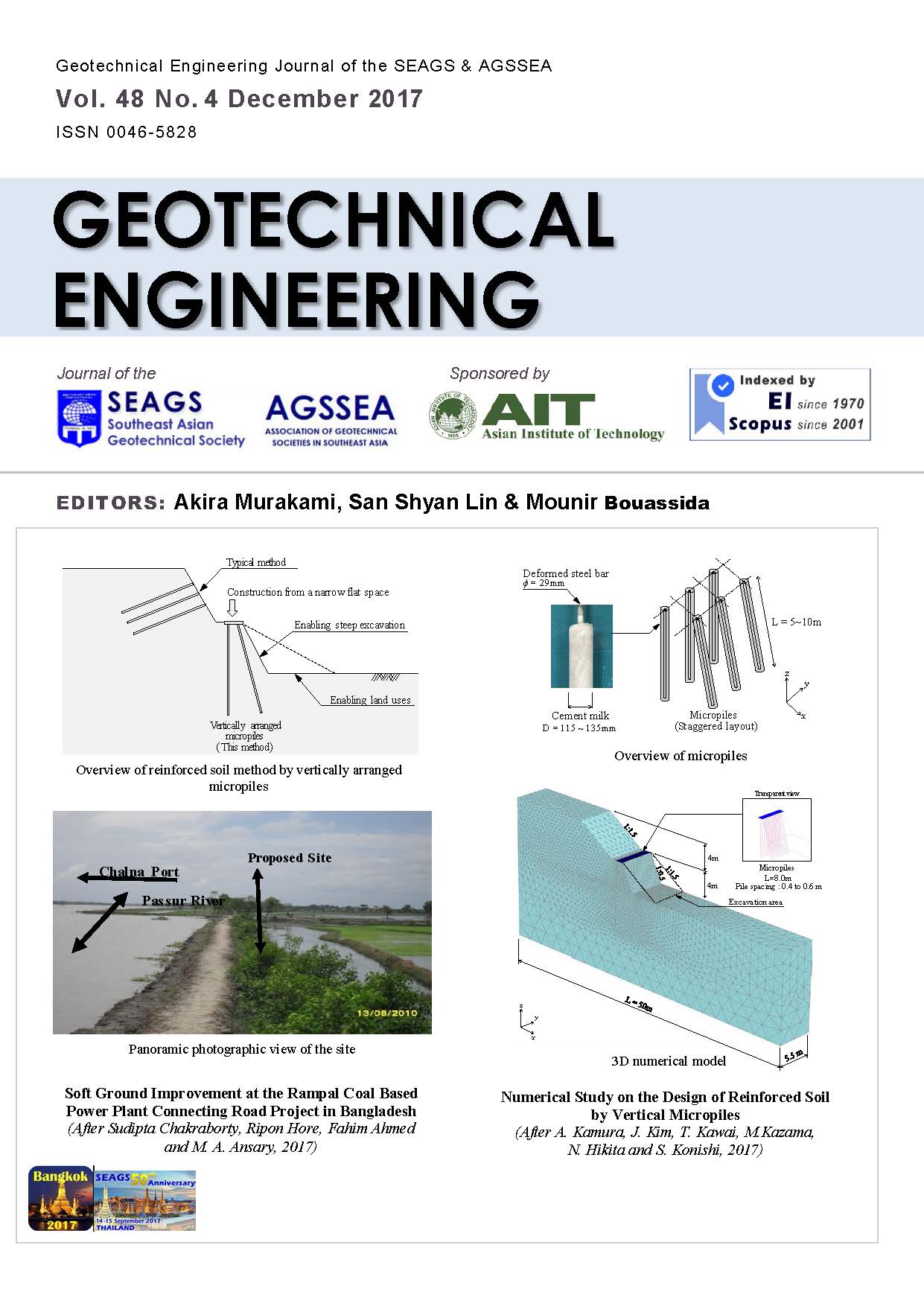Numerical Modelling of Retaining Wall Resting on Expansive Soil
Main Article Content
Abstract
To model the behaviour of expansive soil, it seems necessary to move towards elastoplastic models that have been used for different types of clays. Hardening soil model is chosen in this study. Retaining walls rested on expansive soils are subjected to uplift and lateral forces due to soil swelling. More importantly, the swelling in expansive soil tends to cause additional lateral pressure on wall that caused deformations and bending. Various pattern types of helical piles are used to reduce the vertical and lateral movement of retaining wall constructed on expansive soil. The backfill soil beyond retaining wall is affected by swelling of expansive soil that caused additional lateral earth pressure on the wall of retaining wall. This study showed that the use of inclined helical piles beside vertical helical piles under the base of retaining wall decreased vertical movement 94% and lateral movement 70% for ratio of length of helical pile to depth of expansive soil (L/H) equal to 3.2. In general, the presence of helical piles below retaining wall resisted and controlled the vertical movement but do not control lateral movement except the case of using inclined helical piles.
Article Details

This work is licensed under a Creative Commons Attribution-NonCommercial-NoDerivatives 4.0 International License.
Copyright © 2019 Association of Geotechnical Societies in Southeast Asia (AGSSEA) - Southeast Asian Geotechnical Society (SEAGS).

